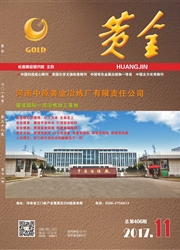

 中文摘要:
中文摘要:
萑香洼金矿床赋存于中元古界熊耳群安山岩中,矿体受断裂破碎带控制。主要的蚀变类型有硅化、钾长石化、黄铁矿化、绢云母化、绿泥石化等,其中硅化、钾长石化、黄铁矿化与金矿化关系密切。自中心向外划分出3个蚀变矿物组合带,其中矿化蚀变岩带与金矿化关系密切。蚀变演化划分为5个阶段,其中石英-钾长石-黄铁矿阶段是主成矿阶段。含矿热液在迁移过程中,与围岩发生了强烈的流体-岩石反应,造成Au、Ag、As、Sb等成矿元素含量增加和金的富集。流体-岩石反应引发的围岩蚀变是造成萑香洼金矿床金沉淀成矿的主要原因.
 英文摘要:
英文摘要:
The ttuanxiangwa gold deposit is contained within a shear zone in andesite of the middle Proterozoic Xiong'er group. The main types of the wall-rock alteration are silicification, potash-alteration, pyritization, sericitization,chloritization and carbonatization, of which the strong silicification, potash-alteration and pyritization are closely related to gold mineralization. The alteration has been divided into mineralization-alteration rock zone, mineralization rock zone and mineralization andesite zone from center to the outside, of which mineralization-alteration rock zone is closely related to gold mineralization. Evolution of the alteration may be divided into five stages, of which mineralization-aheration stage of quartz-potash-pyrite is the principal mineralization period. During fluid-rock interaction, the ore forming components were not equally mobile, resulting the increasing of Au, Ag, As and Sb and enrichment of gold. Fluid-rock interactions are the main reasons tot gold deposition of Huanxiangwa gold deposit.
 同期刊论文项目
同期刊论文项目
 同项目期刊论文
同项目期刊论文
 期刊信息
期刊信息
